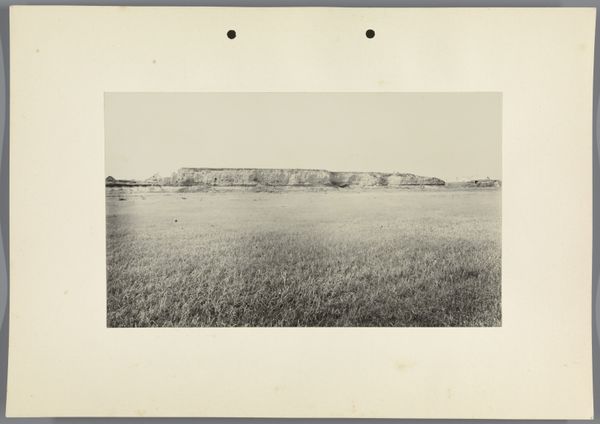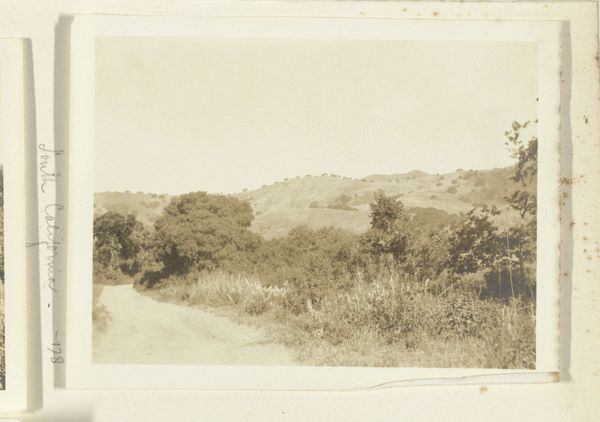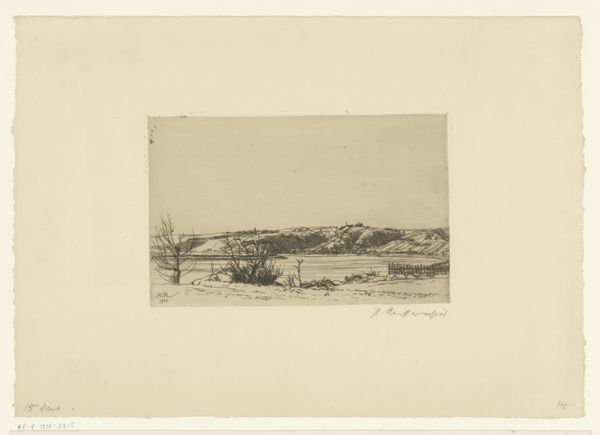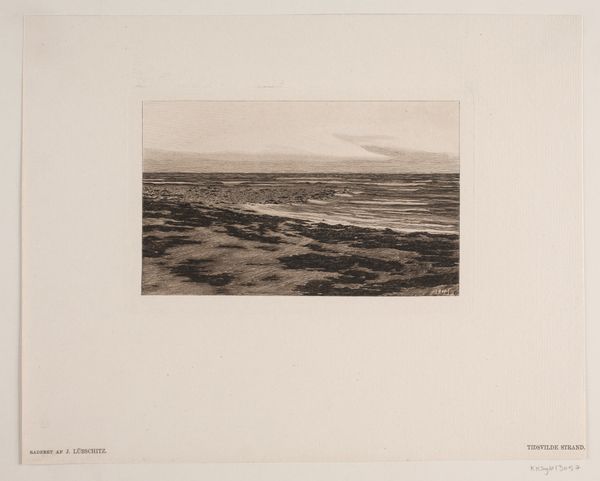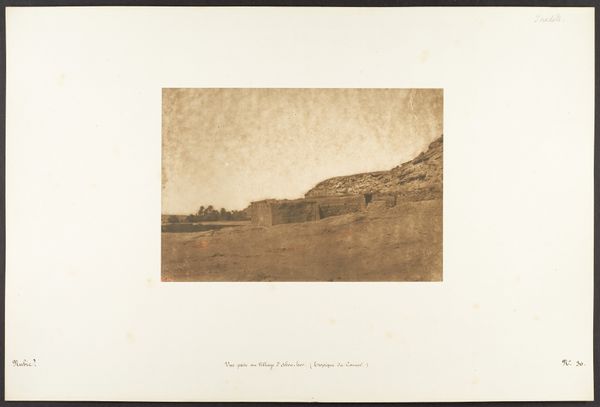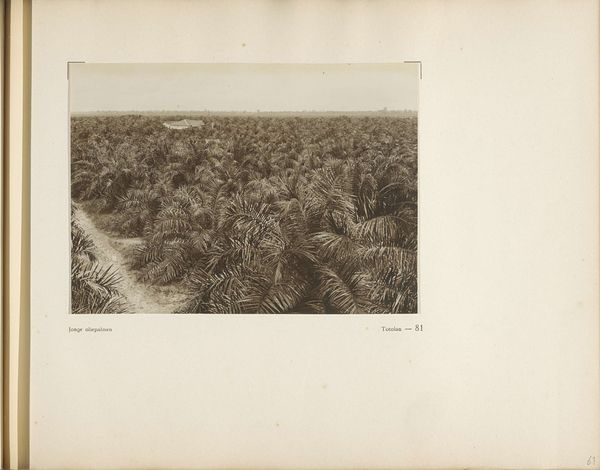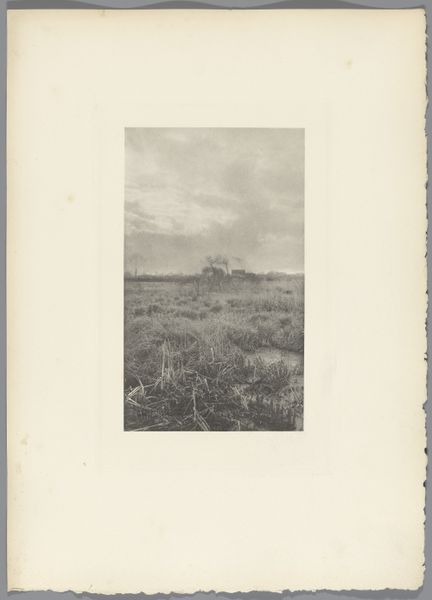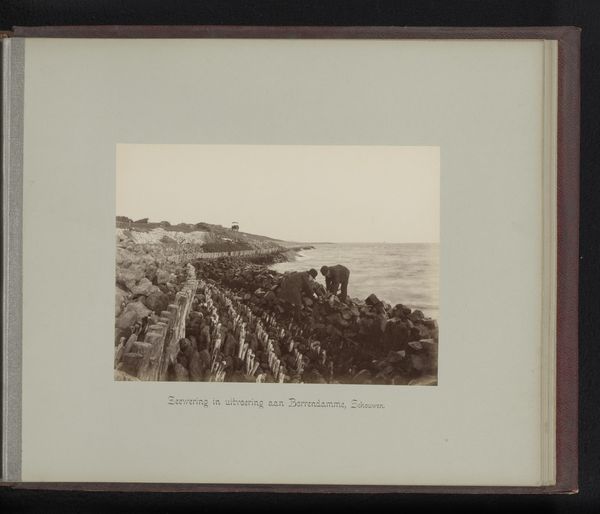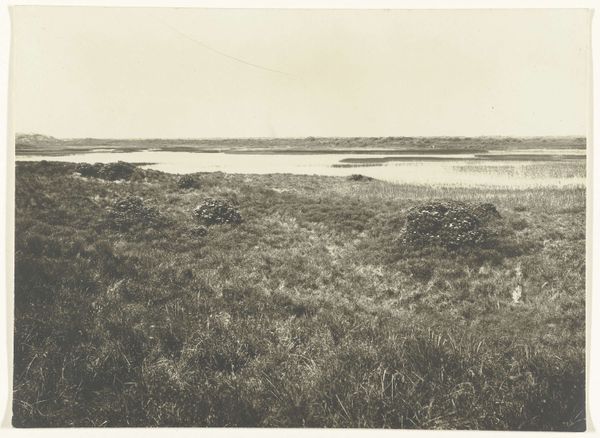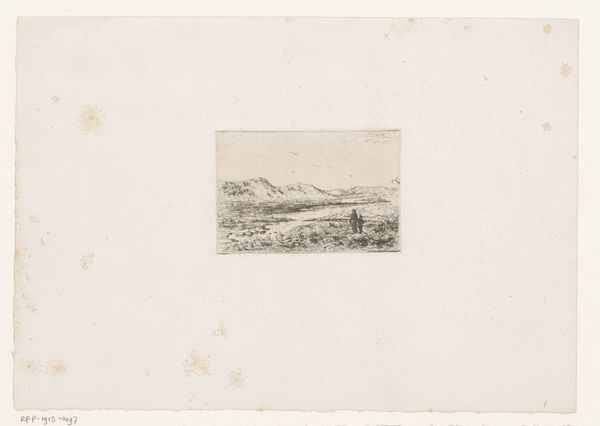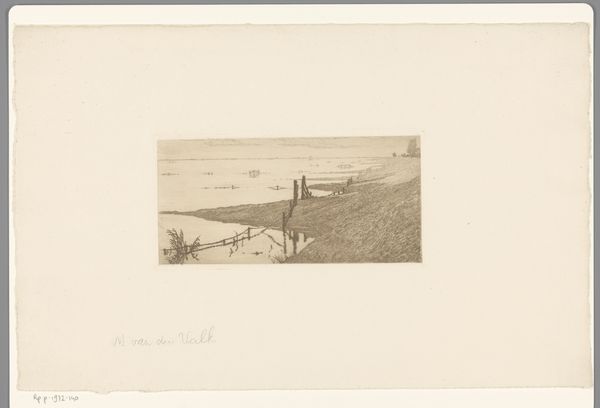
Pagina 132 van fotoboek van de Algemeene Vereeniging van Rubberplanters ter Oostkust van Sumatra (A.V.R.O.S.) c. 1924 - 1925
0:00
0:00
photography, gelatin-silver-print
#
still-life-photography
#
natural tone
#
landscape
#
photography
#
gelatin-silver-print
#
modernism
Dimensions: height 240 mm, width 310 mm
Copyright: Rijks Museum: Open Domain
Curator: This is page 132 from a photo book, "Pagina 132 van fotoboek van de Algemeene Vereeniging van Rubberplanters ter Oostkust van Sumatra," or the General Association of Rubber Planters on the East Coast of Sumatra. It's attributed to J.W. Meyster, dating roughly from 1924 to 1925. Editor: Wow, what a striking composition. There's something almost dreamy about the endless rows of…are those rubber plants? It's vast and somewhat melancholic. The buildings in the distance are just small enough to suggest how all-encompassing that agriculture might be. Curator: The image offers a view of the factory complex amidst a rubber plantation in Sumatra. It speaks volumes about Dutch colonial enterprise and the exploitation of land and labor in the region. Editor: Exploitation is right. Looking at those rows—identical, stretching on forever—it's hard not to think about uniformity and control. What would you say is most telling from your point of view? Curator: Definitely the tension between the apparent order and progress, signified by the factory, and the inherent disruption colonialism caused to both the environment and the indigenous population. Modernism celebrated industrial advancements; we need to understand it also validated colonial agendas. Editor: That's so crucial to unpack, because the soft tones and the serene landscape almost lull you into overlooking the historical weight. I wonder if people seeing it at the time would feel as ambivalent. Curator: Certainly a very different audience with very different knowledge frameworks. Part of our job today is to reveal and recontextualize. How does that soft focus or tone you noticed shift your perspective? Editor: It heightens that dreamy or melancholic atmosphere for me. It evokes nostalgia or even something that approximates romantic longing. It’s almost as if it is trying to cover up the brutal story beneath the landscape with a wistful gaze. What are your closing thoughts about that perspective? Curator: Ultimately it highlights the power of imagery. A photograph like this normalizes and even beautifies colonial practices. Interrogating these visual strategies is crucial to dismantling lasting colonial ideologies.
Comments
No comments
Be the first to comment and join the conversation on the ultimate creative platform.
